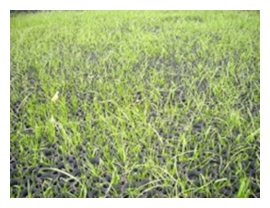Play Equipment: Safety and Ground Protection

Active Play Is Great!
The benefits of active play for children are now well understood in the context of both physical wellbeing but also behavioral skills development. Increasing the activity of children helps their physical development and reduces the health risks associated with obesity both in the short term and over the lifetime of our children. Mental development is also encouraged by active play including the use of imagination and the development of risk assessment and mitigation skills. Top extreme sports athletes appear to be taking big risks but research indicates that they are actually using learnt skills and experience to assess risk and reduce it. These skills are learnt and not given. Learning all these skills is best served by challenging activities such as climbing, swinging and balancing in children.
Providing the best environment:
For the reasons above, providing a physically challenging play environment at home is great but there are some actions to take to make the equipment a safer place to experiment. There are three main elements to providing a good play environment:
~ The play equipment itself ~ Location and surfacing below and around the equipment ~ Resilience of the surfaces around the equipment to wear
The design, cost and utility of the equipment are best discussed with specialist providers of these items.
Considered in play equipment design are the sizes of items such as hand holds, entrapment gaps for limbs, fingers and body etc. Equipment designed to meet British standard EN1176 should minimise these hazards.
With regard to equipment location and surfacing requirements, more information is given below to help you create a safe and long lasting installation which give years of learning fun! It is of note that commercial / public playgrounds are required by law to install compliant safety surfacing but that private residential users do not. Ask your self why is it required in public playgrounds? Because accidents can happen! But with attention to safety surfacing the impact of these can be minimised. ROSPA (www.rospa.com) is a good source of information on injury statistics.
Safety Surfacing Options:
Various options include: (Listed in order of ascending cost - cheapest at the top)
Bark / wood-chip ~ Rubber grass mats that allow grass to grow through ~ Shredded rubber ~ Solid rubber tiles ~ ‘Wet Pour’ resin bound rubber

Grass in itself is a fairly good safety surface and can provide adequate fall protection up to heights of 0.6M. However, grass is a transient surface in that its fall protection depends on factors such as subsoil type, hydration of the soil and the length of the grass. Another problem with grass is that it tends to wear out around equipment which can result in dry compacted soil as hard as concrete! The associated wear also often results depressions that can fill with water when it next rains - no one wants a muddy play area that you can’t use for months of the year after you invested in play equipment.
Bark / wood-chip provide cheap safety surfacing but also require ground work to install effectively (membrane underneath to prevent weed growth and retaining boards - area would requiring re-turfing after removal of equipment). This product will rot down.
Grass mats are a recycled rubber safety surface used all over the UK by councils and general domestic users. They protect the ground from becoming churned up which can create a boggy and muddy mess.
Grass Mats are a commonly used safety surfacing across the UK but the testing of these mats is something which is not commonly understood. 3m Critical Fall Heights (CFH) are often quoted but are also often misunderstood by customers. So, what does a CFH of 3m actually mean?
It means that, when tested in accordance with BS EN 1177:2008, a test height of 3m provided a HIC (Head Injury Criterion) value of 1000. The British Standard states that the HIC value must not exceed 1000, a number whereby it is deemed unlikely that fatal or disabling injuries will occur. The lower the HIC value, the lower the risk of injury.
If you fell on to a surface from 3m and the HIC value recorded was 1000, the limit set by the British Standard, figures suggest that you would be 90% likely to sustain a moderate injury. • If you fell on to a Grassmats Ltd grass mat from 3m you would only record a HIC value of 550. Figures suggest that at this value there is only a 45% chance of moderate injury.

Advantages of grass mats:
- Easy to DIY install - just lay on grass and peg down / interconnect with cable ties • Grass grows through so they disappear (6-8 weeks) • Mow over the top • Can be removed to leave original grass in place - no re-turfing
- Can also be used for other high wear areas - paths / gateways etc • Safety surface - fall protection and non-slip - make great doormats / deck mats
Shredded rubber / rubber tiles or wet pour rubber are expensive professionally installed products for commercial installation and as such are most likely not cost effective for the residential market.
Where should safety surface be laid?:
Clearly play equipment should be sited away from other structures such as fences, sheds or other hard static objects. See your manufacturers installation instructions for more information.
Safety surfaces need to be laid out to an appropriate distance from the equipment taking its height and use into consideration. For example, a swing would normally be protected by an area of 7M x 3M whilst a climbing frame where children could attain a fall height of 3M would require surfacing to a distance of 2.5M around the equipment.

























